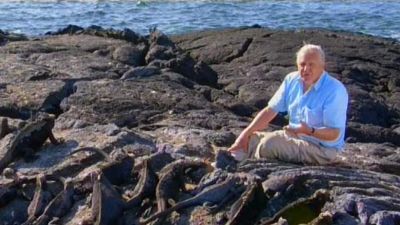Life in Cold Blood
The Cold Blooded Truth (1x1)
Data di messa in onda: Feb 04, 2008
The first episode discusses the keys to success of reptiles and amphibians, looking at thermoregulation, parental care and the time-scales on which reptiles operate. Attenborough begins in the Galápagos Islands, using thermal imaging to demonstrate how marine iguanas warm their bodies by basking in the sun before feeding. Meanwhile, the lizard inhabitants of a Minorcan island have a relationship with its indigenous dead horse arum plants. Attenborough visits Dassen Island to witness one of the world's greatest concentrations of tortoises — around 5,000 of them. Few reptiles are active at night, but crocodiles can rely on water that retains much of its daytime temperature. Conversely, amphibians' moist skin would be damaged by the sun and so most are nocturnal. An exception is the waxy monkey leaf frog, which can deal with sunlight by covering its body in a wax secretion. A puff adder illustrates the relative inactivity of reptiles compared to mammals: one large meal can last up to a year. When it hatches at the onset of winter, the young painted turtle stays underground, near frozen until the spring when it can emerge. Attenborough wonders if the dinosaurs' immense size allowed them to maintain warm blood. The largest living reptile is the leatherback turtle and indeed is able to do so because of insulating body fat. Under the Skin looks at the hunt for the pygmy leaf chameleon, filmed in Madagascar.
- Iniziato: Feb 2008
- Episodi: 5
- Followers: 16
